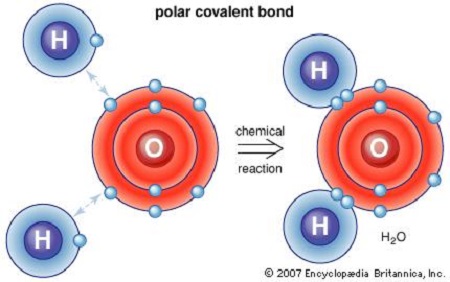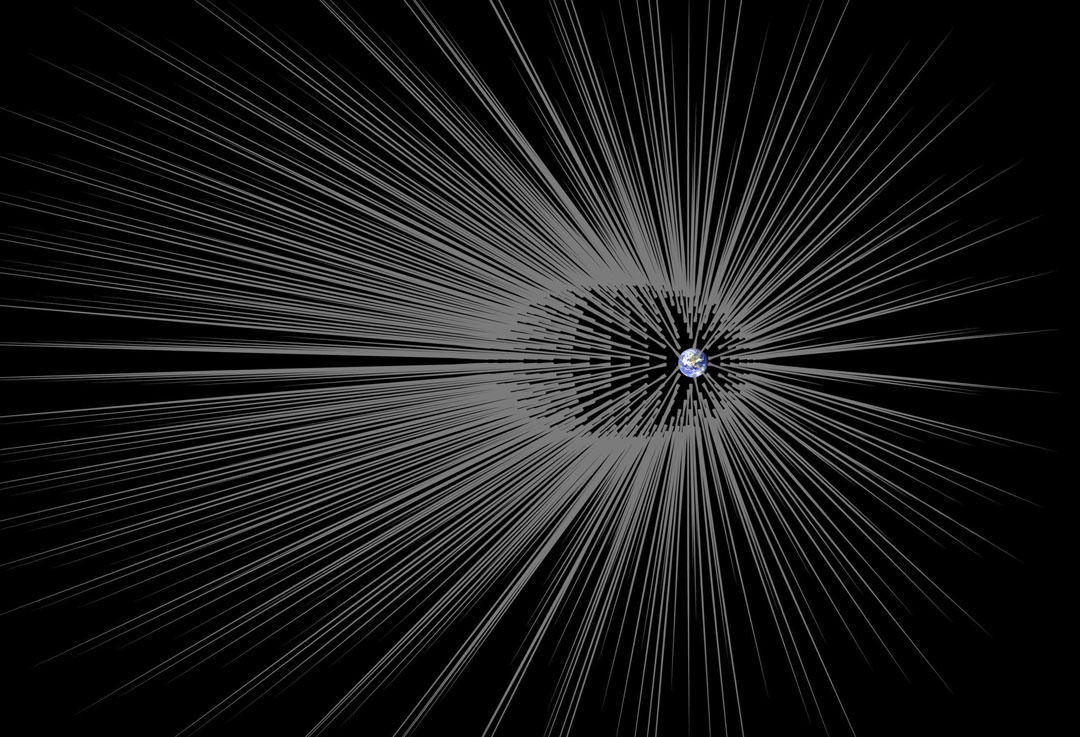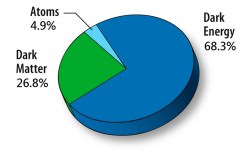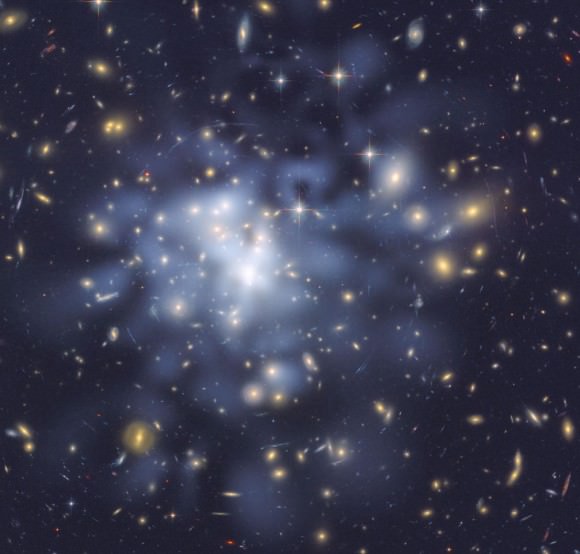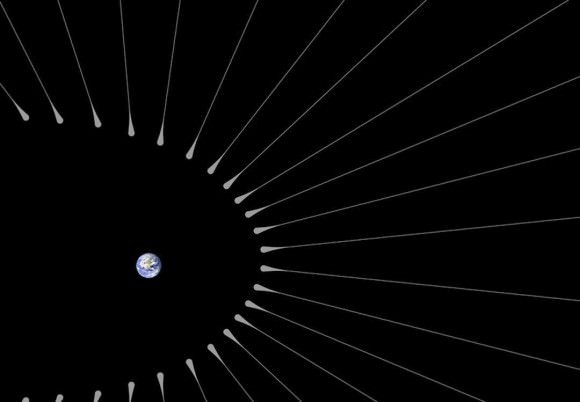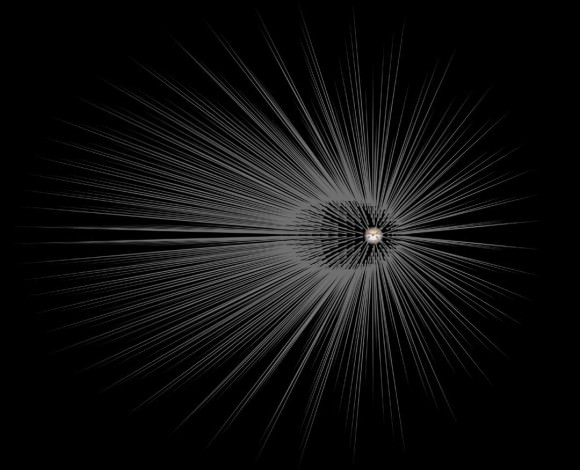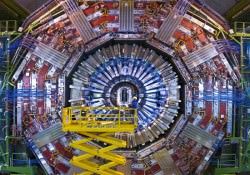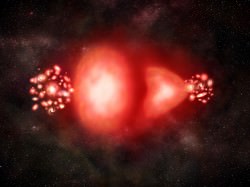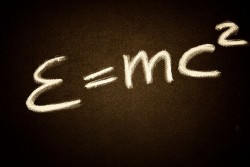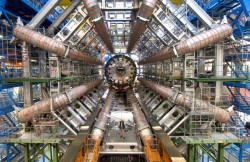The Milky Way is an extremely big place. Measured from end to end, our galaxy in an estimated 100,000 to 180,000 light years (31,000 – 55,000 parsecs) in diameter. And it is extremely well-populated, with an estimated 100 to 400 million stars contained within. And according to recent estimates, it is believed that there are as many as 100 billion planets in the Milky Way. And our galaxy is merely one of trillions within the Universe.
So if we were to break it down, just how much matter would we find out there? Estimating how much there is overall would involve some serious math and incredible figures. But what about a single light year? As the most commonly-used unit for measuring the distances between stars and galaxies, determining how much stuff can be found within a single light year (on average) is a good way to get an idea of how stuff is out there.
Light Year:
Even though the name is a little confusing, you probably already know that a light year is the distance that light travels in the space of a year. Given that the speed of light has been measured to 299,792, 458 m/s (1080 million km/h; 671 million mph), the distance light travels in a single year is quite immense. All told, a single light year works out to 9,460,730,472,580.8 kilometers (5,878,625,373,183.6 mi).
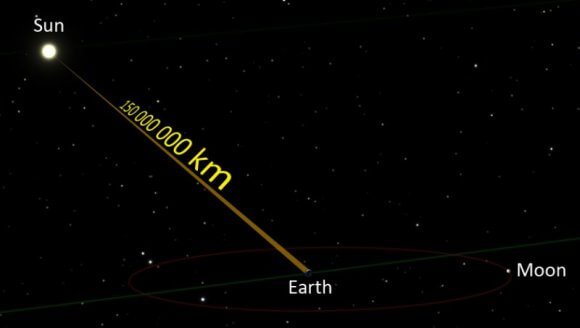
So to determine how much stuff is in a light year, we need to take that distance and turn it into a cube, with each side measuring one light year in length. Imagine that giant volume of space (a little challenging for some of us to get our heads around) and imagine just how much “stuff” would be in there. And not just “stuff”, in the sense of dust, gas, stars or planets, either. How much nothing is in there, as in, the empty vacuum of space?
There is an answer, but it all depends on where you put your giant cube. Measure it at the core of the galaxy, and there are stars buzzing around all over the place. Perhaps in the heart of a globular cluster? In a star forming nebula? Or maybe out in the suburbs of the Milky Way? There’s also great voids that exist between galaxies, where there’s almost nothing.
Density of the Milky Way:
There’s no getting around the math in this one. First, let’s figure out an average density for the Milky Way and then go from there. Its about 100,000 to 180,000 light-years across and 1000 light-years thick. According to my buddy and famed astronomer Phil Plait (of Bad Astronomy), the total volume of the Milky Way is about 8 trillion cubic light-years.
And the total mass of the Milky Way is 6 x 1042 kilograms (that’s 6,000 trillion trillion trillion metric tons or 6,610 trillion trillion trillion US tons). Divide those together and you get 8 x 1029 kilograms (800 trillion trillion metric tons or 881.85 trillion trillion US tons) per light year. That’s an 8 followed by 29 zeros. This sounds like a lot, but its actually the equivalent of 0.4 Solar Masses – 40% of the mass of our Sun.
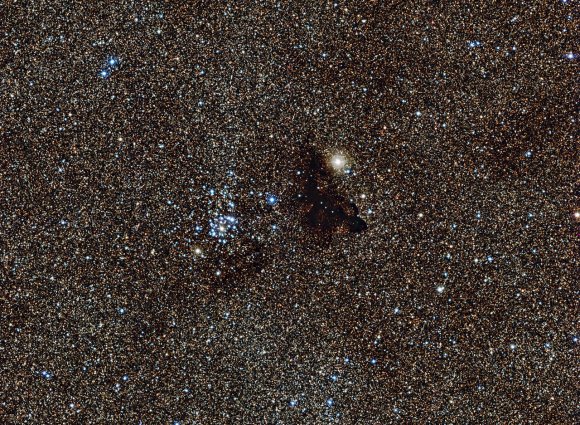
In other words, on average, across the Milky Way, there’s about 40% the mass of the Sun in every cubic light year. But in an average cubic meter, there’s only about 950 attograms, which is almost one femtogram (a quadrillionth of a gram of matter), which is pretty close to nothing. Compare this to air, which has more than a kilogram of mass per cubic meter.
To be fair, in the densest regions of the Milky Way – like inside globular clusters – you can get densities of stars with 100, or even 1000 times greater than our region of the galaxy. Stars can get as close together as the radius of the Solar System. But out in the vast interstellar gulfs between stars, the density drops significantly. There are only a few hundred individual atoms per cubic meter in interstellar space.
And in the intergalactic voids; the gulfs between galaxies, there are just a handful of atoms per meter. Like it or not, much of the Universe is pretty close to being empty space, with just trace amounts of dust or gas particles to be found between all the stars, galaxies, clusters and super clusters.
So how much stuff is there in a light year? It all depends on where you look, but if you spread all the matter around by shaking the Universe up like a snow globe, the answer is very close to nothing.
We have written many interesting articles about the Milky Way Galaxy here at Universe Today. Here’s 10 Interesting Facts About the Milky Way, How Big is the Milky Way?, How Many Stars are There in the Milky Way?, Where is the Earth Located in the Milky Way?, How Far is a Light Year?, and How Far Does Light Travel in a Year?
For more information, check out How many teaspoons are there in a cubic light year? at HowStuffWorks
Astronomy Cast also has a good episode on the subject. Here’s Episode 99: The Milky Way
Sources:




